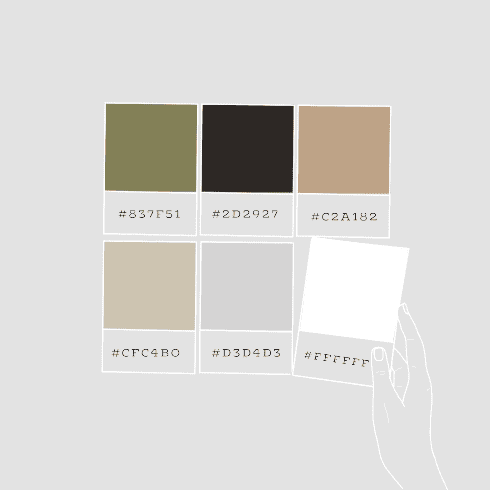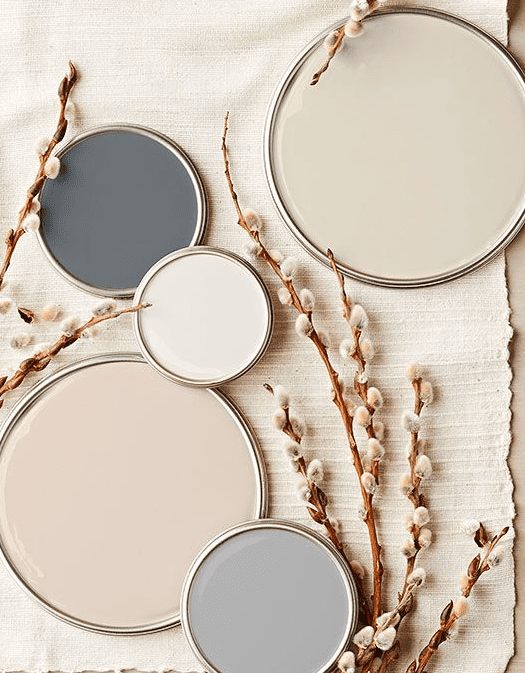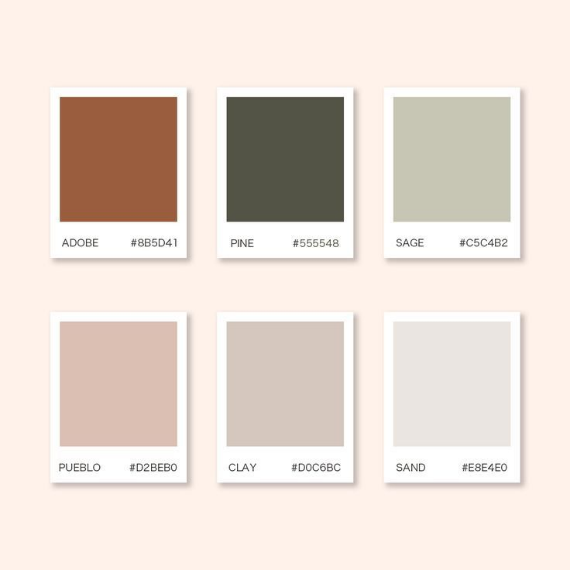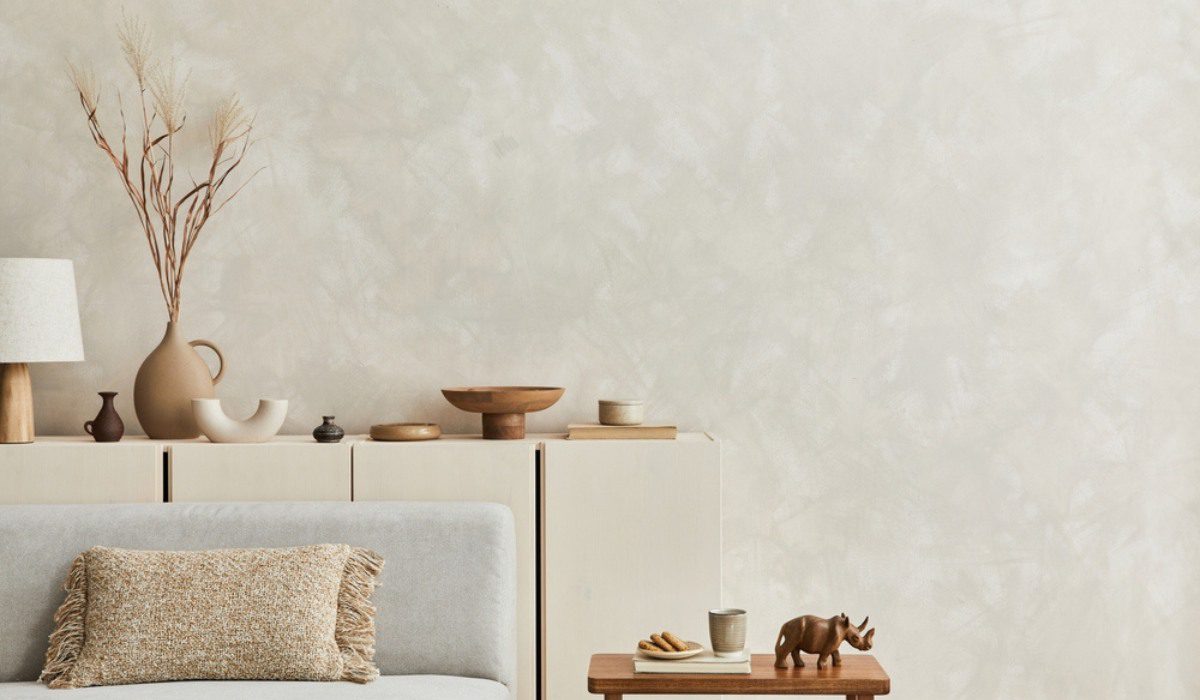Neutral colours provide a consistent backdrop for shifting colour trends. Discover how to incorporate these flawless neutral colour combinations into your home to establish a rounded and stylish ambience.
What are neutral colours?
Neutral colours are subdued shades that emerge colourless but frequently have underpinning hues that alter with lighting. Beige, taupe, grey, cream, brown, black, and white are neutral colours. While neutral colours do not appear on the colour wheel, they complement both primary and secondary colours.
You can make various other colours by combining primary colours such as red, white, and blue. Secondary colours consist of a combination of two primary colours, such as green (yellow and blue), tangerine (yellow and red), and fuchsia (red and blue).
Colours found in a neutral colour palette
The basic neutral colour palette consists of black, white, brown, and grey in varying shades. Here is a rundown of the different types of neutrals:
-
Absolute neutrals
The pure neutral colour palette contains black, white, brown, and grey, all pure colours, meaning they are completely swamped and lack an undercurrent (underlying colour). By mixing multiple pure neutral colours and primary colours, you can alter the saturation and vibrancy of the resulting colour.

Source: Pinterest
-
Near-neutrals
A near-neutral is created by combining a primary colour with a sheer neutral colour. For example, connect the primary colour yellow and the light neutral brown to start a near-neutral tan. The saturation of near-neutral colours is lower than that of pure neutral colours. Similarly, combining a neutral and a bright colour increases the colour’s liveliness, drawing the eye to that specific spot of colour.

Source: Pinterest
-
Hot and cool neutrals
Warm neutrals and cool neutrals are created by combining a vast range of neutral and primary colours. Warm neutrals, including beige, tan, and gold, have yellow, orange, or pink overtones, whereas cool neutrals, such as grey, taupe, and ivory, have blue, purple, or green undercurrents.

Source: Pinterest
Popular neutral colour combinations
With a sophisticated neutral palette, qualities such as crispness, shape, and frame are even more important, allowing the elegance of each component in a room to shine genuinely. And best of all, there is no time constraint on how long such spaces can exist because neutrals are (by definition) unchanging and lasting. Ready to take a spin in the neutral zone? Check out this handbook for adorning your home with neutral colour schemes.
-
Multi-colour tree
The colour palette here is the ideal blend of excursion and allure, making it suitable for anyone seeking to add a little panache to their design projects. The colours are new, esoteric, and contemporary, with dark shades commending light ones and neutral tones bringing in calmness.
The lighter colours offer just enough calm in the backstory, while the darker colours bring out your interior design’s adventurous side. The plum, tangerine, and eco-friendly tones liven up this vibrant palette while maintaining a sense of tranquillity thanks to all those cool beige hues throughout.

Source: Pinterest
-
Pastels and browns
When creating a calming environment, there are many colours to choose from, but why not go for one of the hottest styles right now? There has been an increase in the number of brown neutrals. They offer warmness and sophistication because of their stark contrast against pastel colours such as pale pink. Using neutral colours near your lamp furnishings and walls can give any room a feminine experience while still getting grounded. It can also be used on clothing, upholstery, and food palettes. One such colour scheme is neutral browns and pastels, ideal for bedrooms that want to generate greeting solace without compromising elegance.

Source: Pinterest
-
The happy place
A monochromatic colour palette is defined by perpetrating a single colour with a complementary colour accent. While using soothing pinks or more lively purples as pronunciations all across the space, this look is fashionable and energising for the room. It is alright If committing to a single colour makes you uncomfortable.
Monochrome themes can be as brave or as nuanced as desired. Because we are discussing an all-neutral colour scheme, we can find the perfect colour palette that is also comforting to the eyes.

Source: Pinterest
-
Calm neutrals
Coral is a colour associated with both essence and positivity. Because of its versatility, it is among the most popular colours in style, structure and design. Coral complements neutrals just as well as its relatives. When combined with ultramarine blue, muffled greens, or lilacs, blue and coral can be a stunning combination! If you wish to give your interior a smash without going overboard on the brilliant factor (a common mistake), pair your impartial hue of coral with the colours from this colour palette.

Source: Pinterest
-
Cirrus sky
Grey is a colour that falls anywhere between black and white without becoming either too dark or light. This colour has a subtle hue but can be melded with other colours to generate differential impacts based on your needs; it is appropriate for both formal and informal settings.
This colour palette is flexible as it can be used in both summer and winter, in casual settings such as an oceanside wedding reception or in more formal situations such as corporate Christmas parties. When combined with grey’s reduced shade choice, neutral blue colours and beige generate a fantastic colour blend; linking them around each other makes for great combos.

Source: Pinterest
Repainting ideas with neutral colours
Use a variety of tints
Tonal colour palettes add features and decorations to a neutral colour palette, making certain areas of a room stand out. Incorporate various tints and neutrals to make the space more lively and engaging. To add a pop of colour, pair the colour sage with a primarily grey and white room. A pop of pink combines well with relatively warm neutrals like gold or beige.
Consider the lighting
The lighting in a room impacts how your eyes perceive colour. Because artificial lighting has a yellow hue, it underscores relatively warm neutrals. When selecting colour schemes, consider the spring, the time of the day, the sun’s position, and the room’s location. For example, sun daylight from the north has a blue tint, creating neutral colours that are darker and less overloaded, whereas light from the east or west has a warmer hue. White paint is available in various shades that show up differently based on the lighting.
Colour can be added with accessories
While teaming neutral walls with impartially coloured large furniture items can generate a calming effect, this does not mean you have to sacrifice colour. Instead, incorporate colour into the room’s various accessories, such as decorative pillows, illustrations, or drapes. Selecting colourful accessories allows you to alter the aesthetic and cosmetic elements of the room to fit the seasons.
Choose the appropriate colour
The effects of various close and simple neutral colours on a room vary. Dark, cool colours create a cosy atmosphere in a room, whereas lighter tones make the room appear larger. Just choose a room colour that complements the layout and feel of the space.
FAQs
Which are the four neutral colours?
Black, brown, grey, and white are true neutral colours. These hues are produced by combining two complementary colours. The lack of hue undertones contributes to their purity.
What colour paint goes with just about everything?
Greige is simply a combination of grey and beige. It can be the combination of both worlds, enticing to those who like the glance of grey but are hesitant to abandon the retro vibe of beige. Greiges are excellent whole-house paint colours because they go everywhere and attract all!
Housing News Desk is the news desk of leading online real estate portal, Housing.com. Housing News Desk focuses on a variety of topics such as real estate laws, taxes, current news, property trends, home loans, rentals, décor, green homes, home improvement, etc. The main objective of the news desk, is to cover the real estate sector from the perspective of providing information that is useful to the end-user.
Facebook: https://www.facebook.com/housing.com/
Twitter: https://twitter.com/Housing
Email: [email protected]











